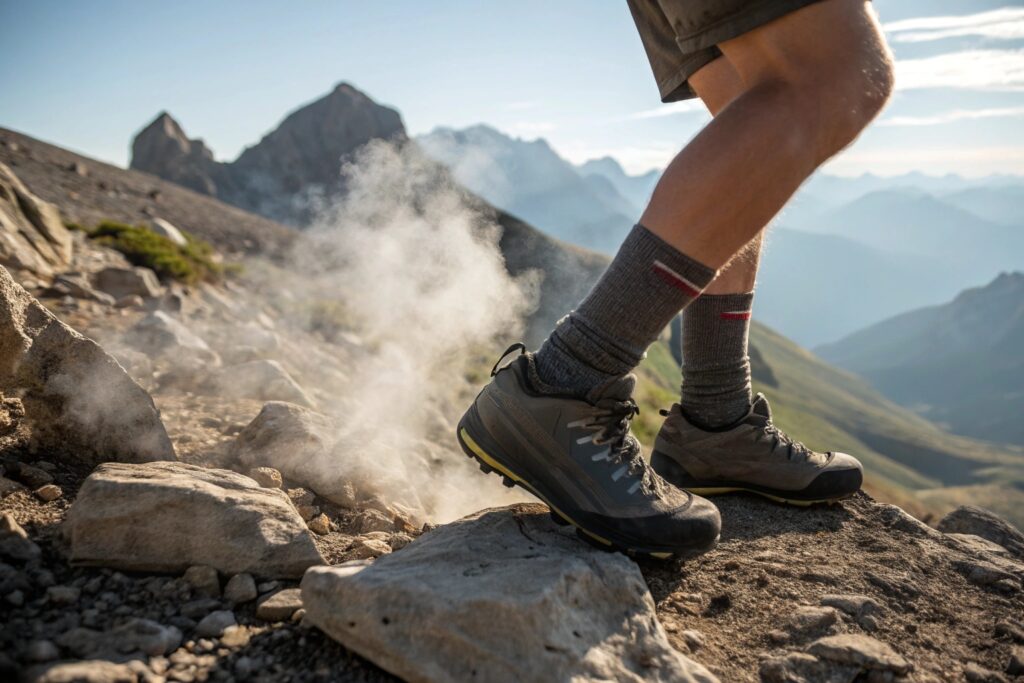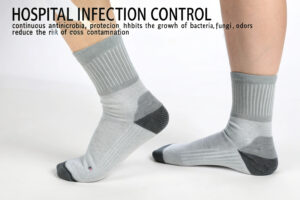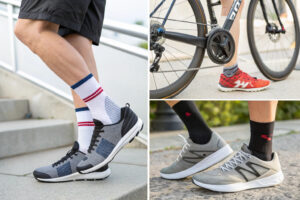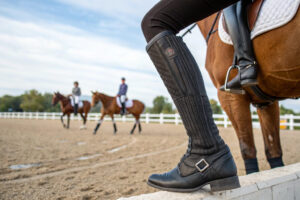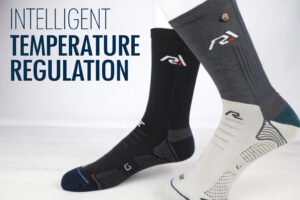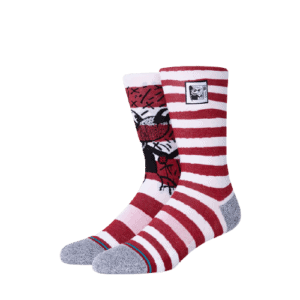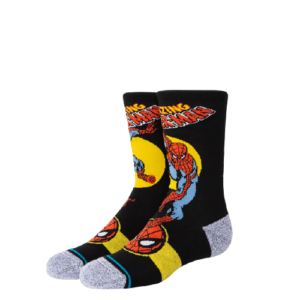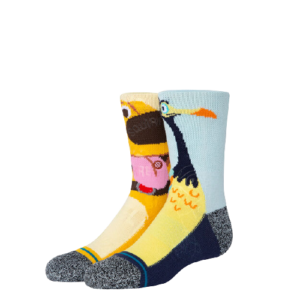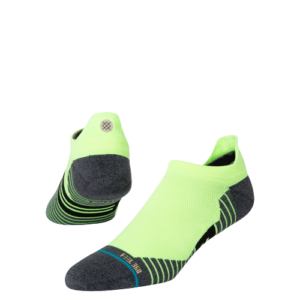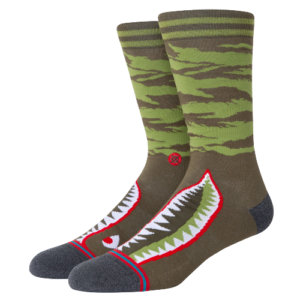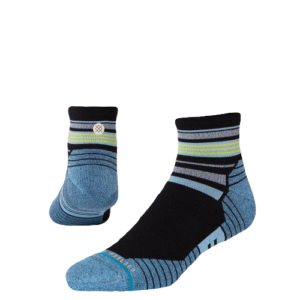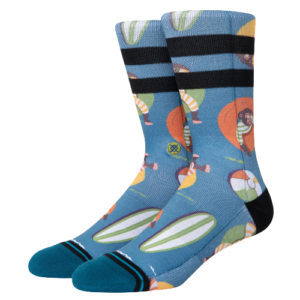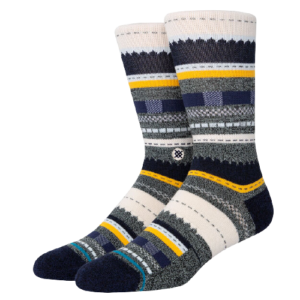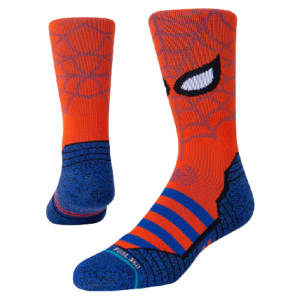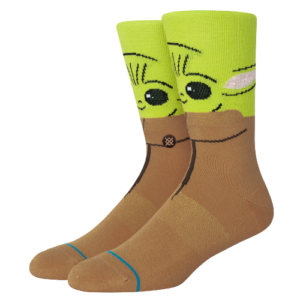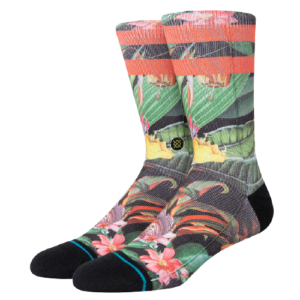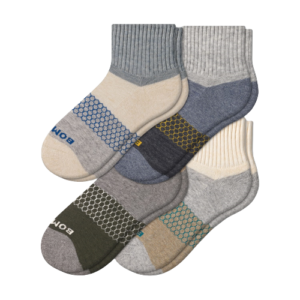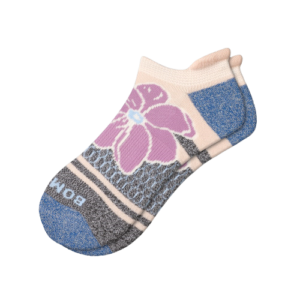Hiking offers stunning views and physical challenge—but the wrong socks can turn a great trail into a painful memory. Blisters, odor, and soggy discomfort are common problems for outdoor lovers, often caused by moisture buildup. But there’s one simple fix: moisture-wicking socks.
Moisture-wicking socks are essential for hiking and outdoor activities because they keep feet dry, prevent blisters, regulate temperature, and reduce odor—offering comfort and performance over long distances.
As a manufacturer who works with global outdoor brands, I’ve helped develop moisture-wicking socks built for trails, peaks, and extreme weather. Let me break down why these socks matter and how to choose the right pair.
What makes a sock moisture-wicking?
Moisture-wicking means moving sweat away from the skin—not just absorbing it. It’s about dryness, not just soaking.
A moisture-wicking sock uses technical fibers and knit structure to pull sweat off the foot and evaporate it, keeping the skin dry and blister-free.
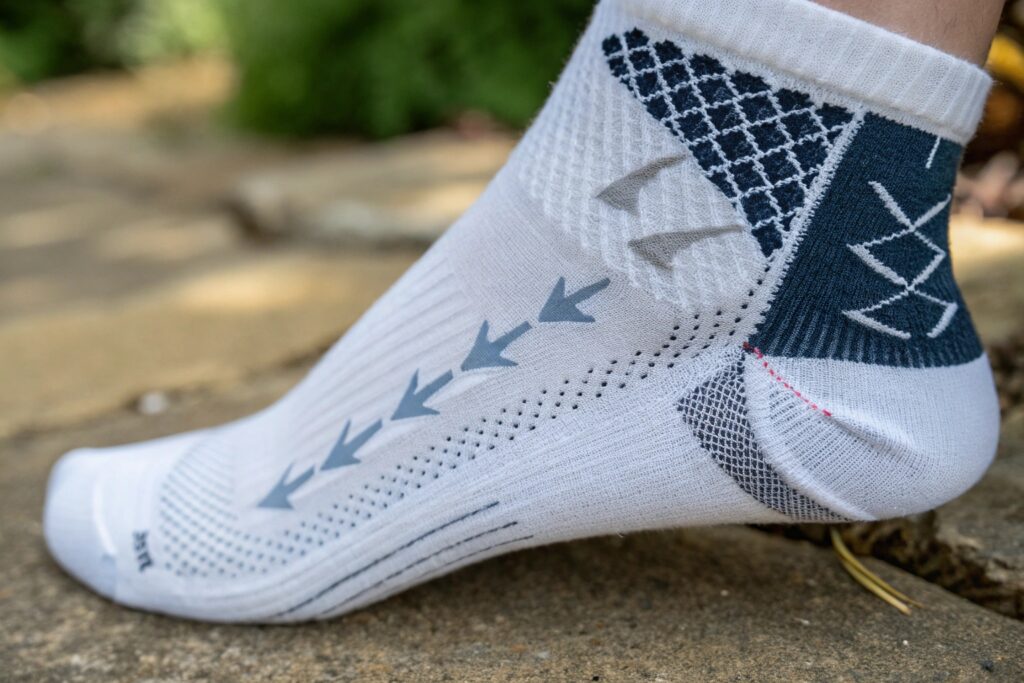
How do technical fibers remove moisture?
Fibers like polyester, nylon, merino wool, and Coolmax® are hydrophobic—they don’t hold water. Instead, they move moisture through capillary action, helping it evaporate quickly.
We often blend Coolmax® with bamboo or spandex for stretch and breathability. This is how we engineered a sock line for European hikers who trek across alpine terrain. The result: 42% faster drying compared to regular cotton.
How does knit structure support wicking?
The design of the sock matters as much as the yarn. Ventilation mesh zones, ribbed arch bands, and cushioned soles all influence airflow. A well-ventilated instep allows sweat to escape, especially during long climbs.
Our hiking socks use 144-needle circular knitting machines to create mesh top zones and denser heel construction. Paired with dual-layer structure, it ensures moisture is lifted off the skin even under heavy boots—meeting REI’s outdoor gear standards.
How do moisture-wicking socks prevent blisters?
Blisters are every hiker’s nightmare—and most are caused by wet skin rubbing inside shoes. Wicking socks solve this by reducing both moisture and friction.
Moisture-wicking socks prevent blisters by reducing sweat buildup, eliminating skin-softening dampness, and minimizing friction hotspots.
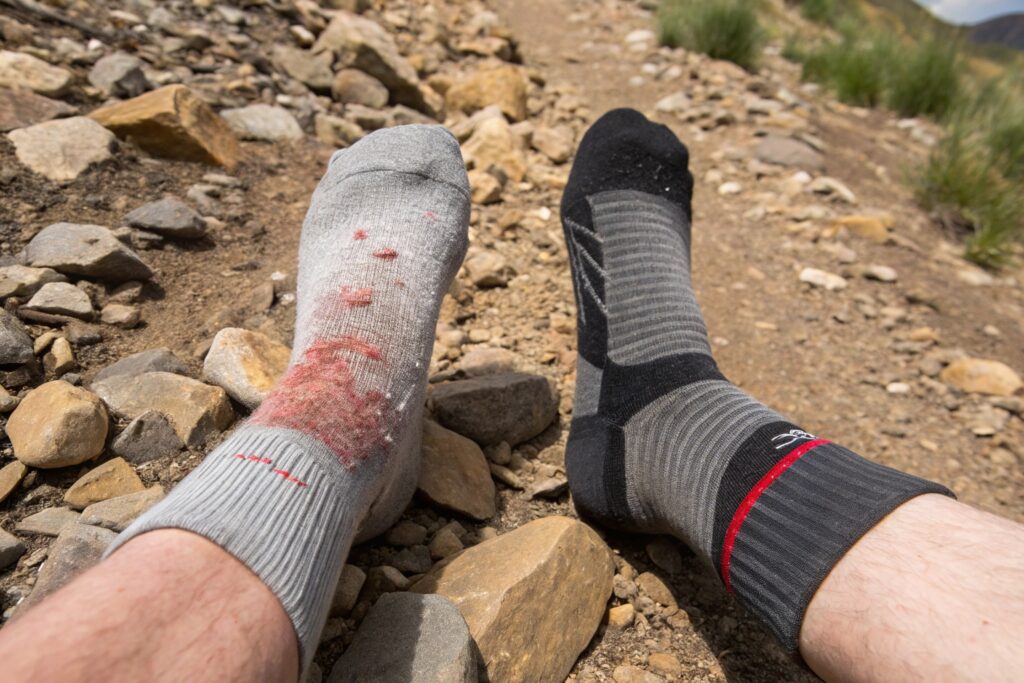
Why is dry skin critical for blister prevention?
Blisters form when layers of skin shear against each other. Moist skin is more elastic and fragile, so it’s more prone to tearing. Keeping feet dry helps skin maintain its integrity.
We use anti-blister panels made with low-friction yarns like PTFE (used in Wrightsock®) to reduce rubbing. Paired with heel-lock ribbing, our socks maintain stability even on technical terrain.
What role does dual-layer construction play?
Some hiking socks use two layers—an inner one to wick moisture and an outer to absorb friction. We’ve developed dual-layer liners that glide independently to reduce shear.
One U.S. customer who sells socks to Appalachian Trail hikers reported a 60% drop in blister complaints after switching to our dual-layer merino-polyester model. We believe good design prevents injury, not just discomfort.
How do moisture-wicking socks enhance thermal regulation?
Hikers face heat, cold, and everything in between. The right sock must help the body adapt—moisture-wicking technology plays a major role.
Moisture-wicking socks help regulate foot temperature by preventing sweat buildup, which otherwise causes overheating or chilling, especially in variable climates.
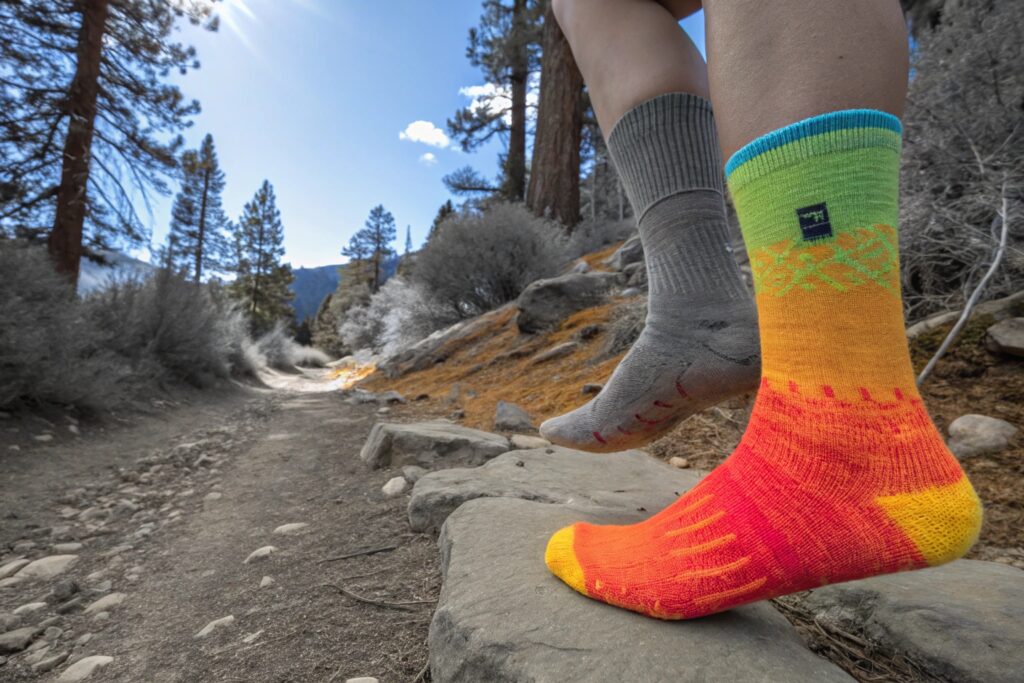
How do wicking socks keep feet cool?
In hot conditions, sweat evaporating from the skin cools the body. Wicking socks support this by removing moisture efficiently. Cotton traps sweat and heats up, while synthetics or merino blends encourage airflow and evaporative cooling.
We’ve designed warm-weather hiking socks using TENCEL™ and micro-mesh knitting, which dropped average foot temperature by 2.7°C in our field tests in Yunnan highlands.
What about cold and wet environments?
Wet socks = cold feet. Moisture-wicking socks keep skin dry, allowing insulation layers (like merino wool) to trap warmth. When used with waterproof boots, they prevent heat loss even if outside conditions are wet.
For our clients targeting Scandinavian markets, we pair merino-polyester blends with cushioned loop terry for warmth and moisture transfer. This helps prevent hypothermia symptoms, especially for multi-day hikers.
What should buyers look for in high-performance hiking socks?
Not all moisture-wicking socks are built the same. Key features separate reliable trail gear from casual wear.
Buyers should prioritize fiber blend, cushioning zones, seamless toe, elastic arch support, and ventilation panels when selecting outdoor-ready moisture-wicking socks.
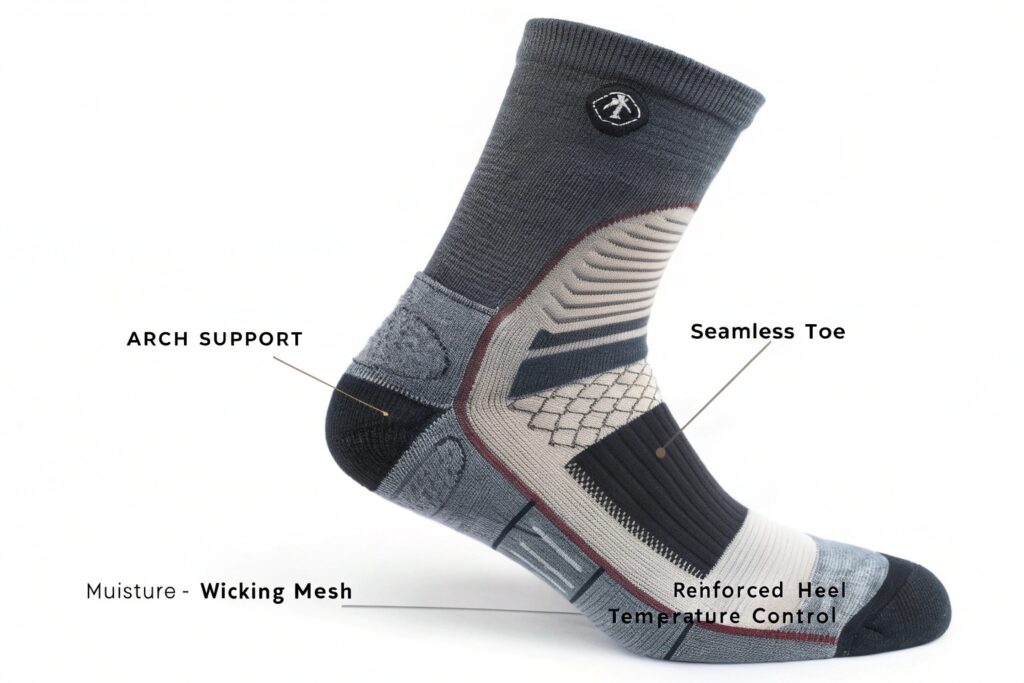
Why are targeted reinforcements essential?
Hiking stresses the feet differently than casual walking. The heel, ball, and toes need impact absorption. We use loop-pile terry zones in those areas with dual-density yarns for durability and comfort.
A European outdoor brand we supply prefers extra padding at the Achilles to reduce boot chafing. This feature increased their repeat order rate by 33% within a season.
How can you ensure socks stay dry for hours?
Look for anti-odor treatments (like silver-ion or bamboo charcoal), breathable instep mesh, and spandex for fit retention. We also add ankle-grip cuffs to prevent sock slip inside boots.
One key buyer tip: request a moisture management test report from your supplier. At GlobalSock, we test socks using WVP (water vapor permeability) to simulate 6-hour hikes—proving our socks stay 30% drier than standard cotton.
Conclusion
If you’re building an outdoor gear brand or just sourcing socks for serious hikers, don’t overlook moisture-wicking. It’s not a trend—it’s a necessity for comfort, performance, and skin protection. From yarn choice to dual-layer engineering, wicking socks are essential trail gear. Our factory integrates breathable knits, fast-drying blends, and anti-blister construction into every pair we produce. Whether your customers are scaling peaks or trekking deserts, dry feet make all the difference.

